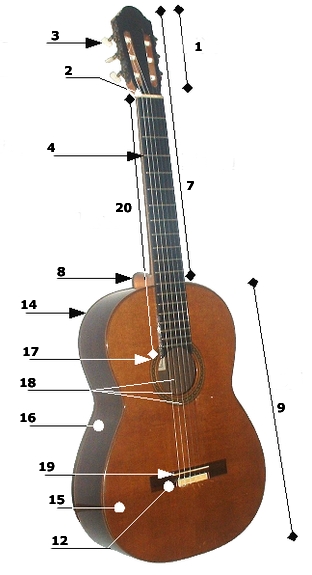Norway Spruce : Soundboards of String Instruments
A soundboard transmits and radiates energy from the string of instruments. A quality soundboard should allow for easy transmission of energy, maximizing the amount of energy radiating outwards. Also, it creates the special timbre, or tone quality, of the sound’s energy. On the image at right, the soundboard is labeled #15.
Historically, Picea abies is the wood of choice for crafting soundboards. String instruments play an important role in western classical music, thus, the acoustical properties of these types of instruments have been researched extensively. The research has most often concerned the wood of the Norway Spruce. Instrument craftspeople consider the wood to be a reference to which all other woods should be compared when exploring other timbers for soundboards, because it performs so well acoustically. The wood of P.abies has a low density and very high modulus of elasticity, or “ratio of the applied stress to the change in shape of an elastic body” (Modulus of Elasticity, 2010). These qualities make it an ideal wood for crafting the soundboards of instruments, such as guitars and violins.

